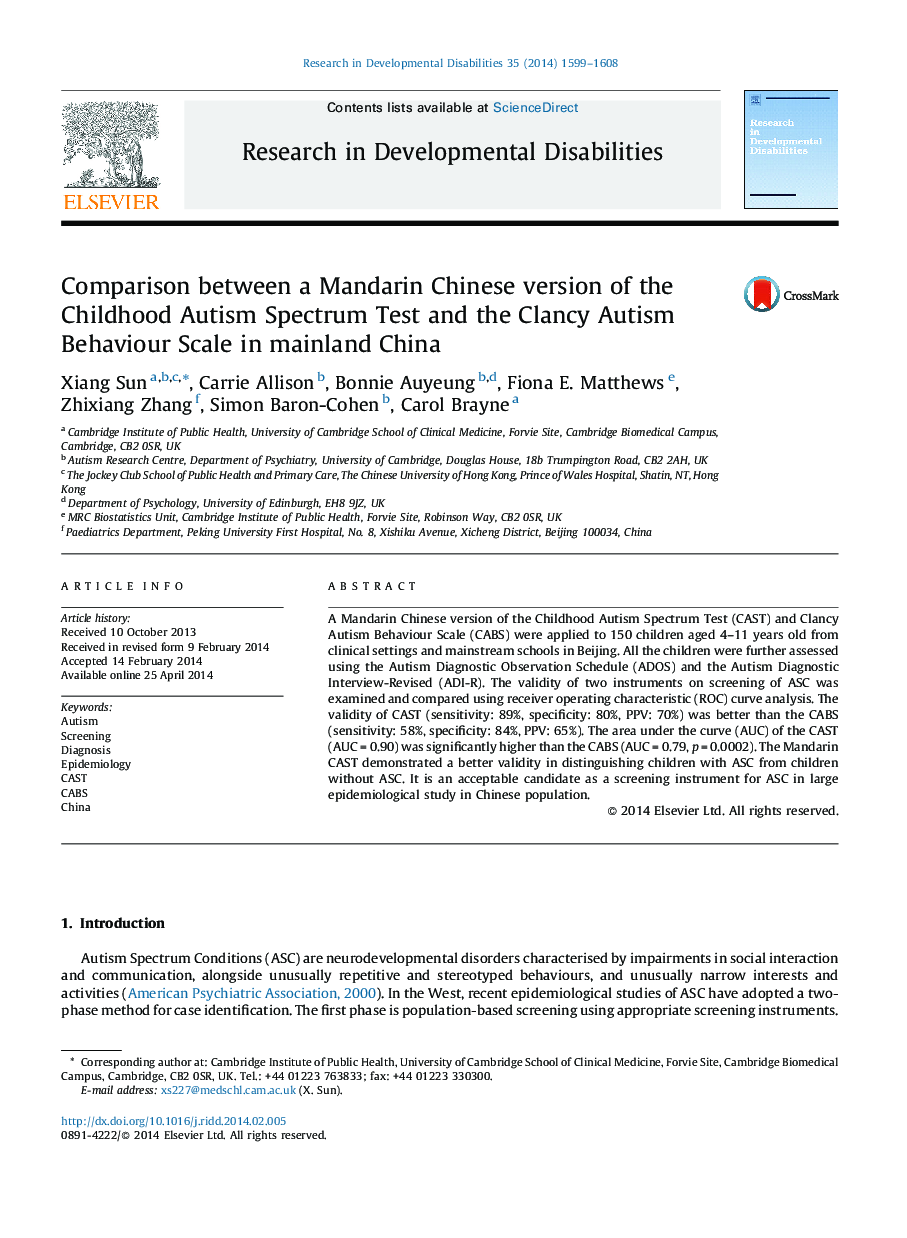| Article ID | Journal | Published Year | Pages | File Type |
|---|---|---|---|---|
| 10317236 | Research in Developmental Disabilities | 2014 | 10 Pages |
Abstract
A Mandarin Chinese version of the Childhood Autism Spectrum Test (CAST) and Clancy Autism Behaviour Scale (CABS) were applied to 150 children aged 4-11 years old from clinical settings and mainstream schools in Beijing. All the children were further assessed using the Autism Diagnostic Observation Schedule (ADOS) and the Autism Diagnostic Interview-Revised (ADI-R). The validity of two instruments on screening of ASC was examined and compared using receiver operating characteristic (ROC) curve analysis. The validity of CAST (sensitivity: 89%, specificity: 80%, PPV: 70%) was better than the CABS (sensitivity: 58%, specificity: 84%, PPV: 65%). The area under the curve (AUC) of the CAST (AUC = 0.90) was significantly higher than the CABS (AUC = 0.79, p = 0.0002). The Mandarin CAST demonstrated a better validity in distinguishing children with ASC from children without ASC. It is an acceptable candidate as a screening instrument for ASC in large epidemiological study in Chinese population.
Related Topics
Life Sciences
Neuroscience
Behavioral Neuroscience
Authors
Xiang Sun, Carrie Allison, Bonnie Auyeung, Fiona E. Matthews, Zhixiang Zhang, Simon Baron-Cohen, Carol Brayne,
